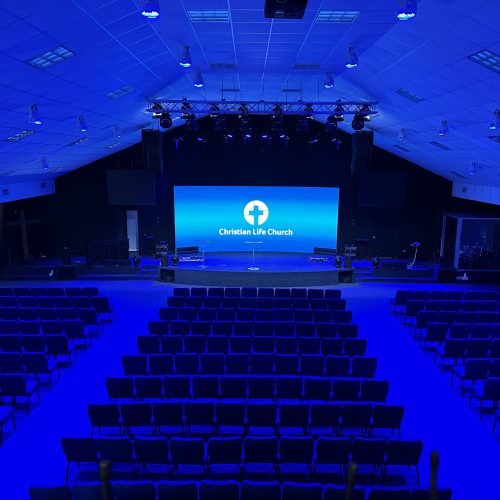Troubleshooting Your LED Screen: A Step-by-Step Guide
LED screens are ubiquitous in our daily lives, from televisions and computer monitors to large digital billboards. Despite their reliability, they can occasionally lose signal, leading to a frustrating user experience. However, this issue is often not as severe as it might seem. In this guide, we will walk you through the steps to troubleshoot your LED screen losing signal, focusing on simple yet effective methods that can quickly resolve the problem.
Step 1: Check the Signal Flow from the Processor
The first and most critical step in troubleshooting an LED screen is to verify the signal flow from the processor to the screen. The signal flow is the path that the digital signal travels from your media source (like a computer or video player) through the processor and ultimately to the LED screen. Disruptions in this flow can cause the screen to lose signal.
- Inspect the Connections: Ensure that all cables are securely connected. Loose or damaged cables can interrupt the signal flow. Check both ends of the cable for a tight fit.
- Test the Cables: If possible, use another cable to rule out any issues with the existing one. Sometimes, cables can wear out or become defective.
- Check the Ports: Examine the ports on both the processor and the LED screen. Dust or debris can sometimes interfere with the connection. Clean the ports gently if necessary.
Step 2: Verify the Input Source
Often, the issue of a lost signal can be attributed to the screen being set to the wrong input source. This is a common and easily rectifiable problem.
- Switch Inputs: Use the remote control or on-screen menu to cycle through the different input sources on your LED screen. Ensure you select the one that corresponds to the device you are trying to use.
- Check the Source Device: Make sure the device connected to the LED screen (such as a DVD player, game console, or computer) is powered on and functioning correctly.
- Reboot Devices: Sometimes, simply restarting both the source device and the LED screen can resolve the issue by resetting the connection.
Step 3: Examine the Power and Data Diagrams
If the signal loss appears to occur in the middle of the screen or affects only a portion of it, the issue might be related to the power and data distribution within the screen itself.
- Review the Power Diagram: LED screens are composed of multiple panels, each requiring its power supply. Check the power diagram to ensure that each panel is receiving adequate power. Look for signs of a power disruption, such as flickering or dim areas.
- Inspect the Data Diagram: Similar to power, data needs to be evenly distributed across all panels. A disruption in the data flow can cause parts of the screen to lose signal. Verify that all data cables are securely connected and that there are no breaks in the data chain.
Additional Tips for Efficient Servicing
- Firmware Updates: Ensure that your LED screen and any connected devices are running the latest firmware. Manufacturers often release updates that can fix bugs and improve compatibility.
- Signal Boosters: For large setups, using a signal booster can help maintain a strong and stable signal from the processor to the screen.
- Environmental Factors: Consider the environment where the LED screen is installed. High temperatures, humidity, and dust can affect performance. Ensure the area is clean and well-ventilated.
Common Issues and Their Solutions
- Screen Flickering: This can be caused by a weak signal, poor connections, or power issues. Check all cables and power supplies.
- No Signal Message: This often indicates that the screen is set to the wrong input or that the source device is not sending a signal. Verify input settings and the status of the source device.
- Partial Screen Display: If only part of the screen is displaying an image, there may be a problem with the data distribution. Check the data cables and connections.
When to Seek Professional Help
While many signal loss issues can be resolved with the steps outlined above, some problems might require professional assistance. If you have tried all the troubleshooting steps and the issue persists, it may be time to contact a professional technician. They can perform a more detailed diagnosis and repair any underlying hardware issues.
Preventative Measures
To minimize the chances of signal loss in the future, consider the following preventative measures:
- Regular Maintenance: Perform routine checks on all connections, cables, and ports. Regularly clean the screen and surrounding area to prevent dust buildup.
- Proper Installation: Ensure that your LED screen and all associated equipment are installed correctly and securely. Follow the manufacturer’s guidelines for setup and usage.
- Surge Protection: Use surge protectors to safeguard your equipment from power spikes that could damage the components and disrupt the signal.
Conclusion
Troubleshooting an LED screen losing signal doesn’t have to be a daunting task. By following these systematic steps—checking the signal flow, verifying the input source, and examining power and data diagrams—you can often identify and resolve the issue quickly and effectively. Remember, many signal loss problems are due to simple and easily fixable issues. However, if the problem persists, do not hesitate to seek professional help to ensure your LED screen is functioning optimally.
At SV Solutions, we recognize the significance of
crafting unforgettable experiences through seamless events.























